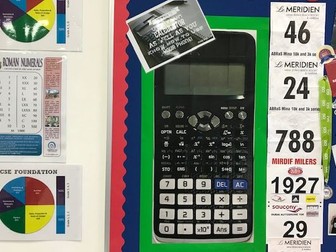
Stem and Leaf Diagrams
Stem and Leaf Worksheets for the students to write on.
Designed for the students to firstly put the numbers in the correct rows and then sort them. One leaf per square. Helps students identify modal classes and comparison between stem and leaf and bar chart.
Once the sorted stem and leaf diagram is complete students can then use it to find the range and the median.
Starts with whole numbers, then decimals and then back to back stem and leaf diagrams. Included is a short homework task to test understanding.
I have used this resource with both KS3 and KS4 students depending on their ability.
